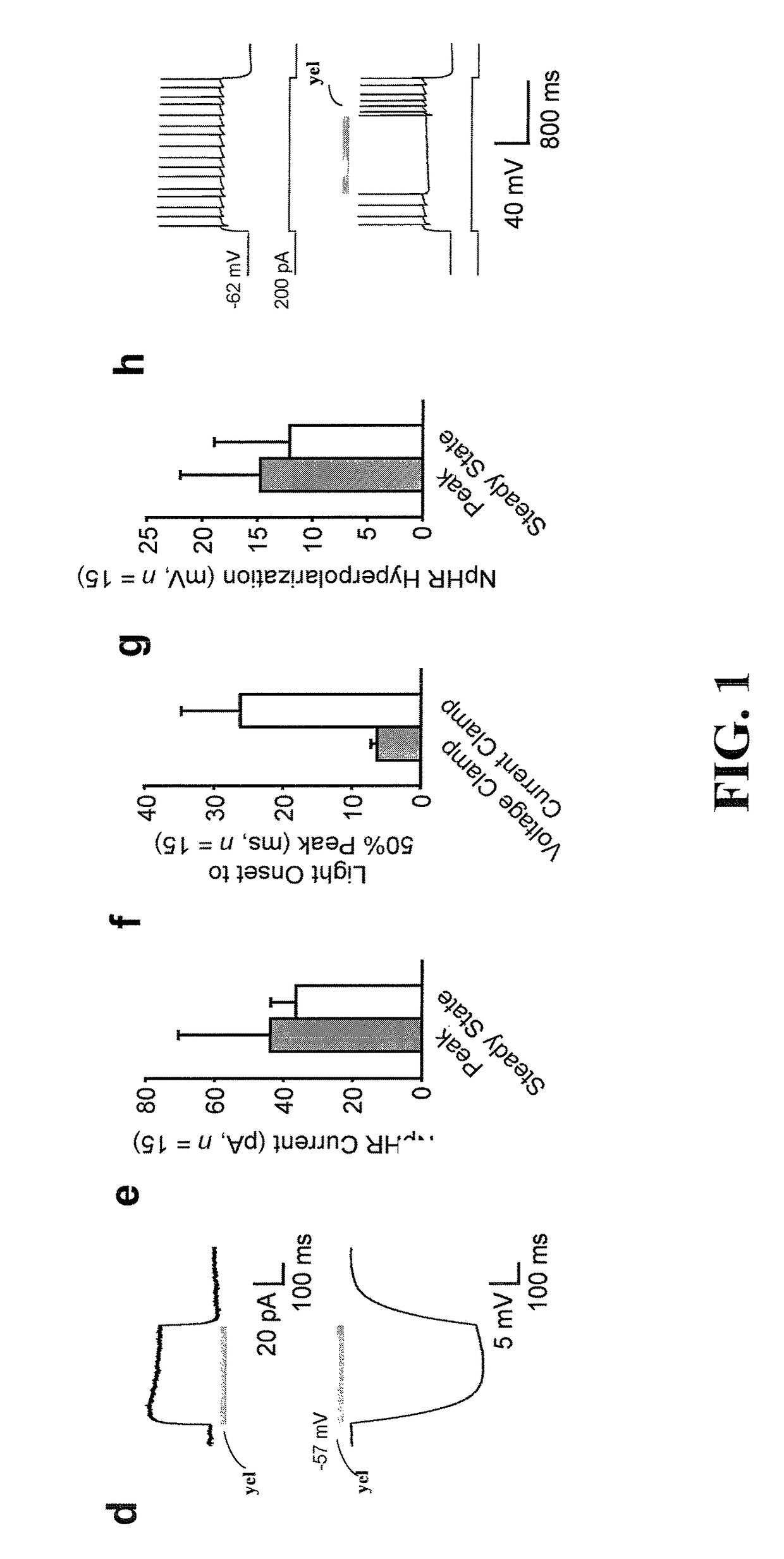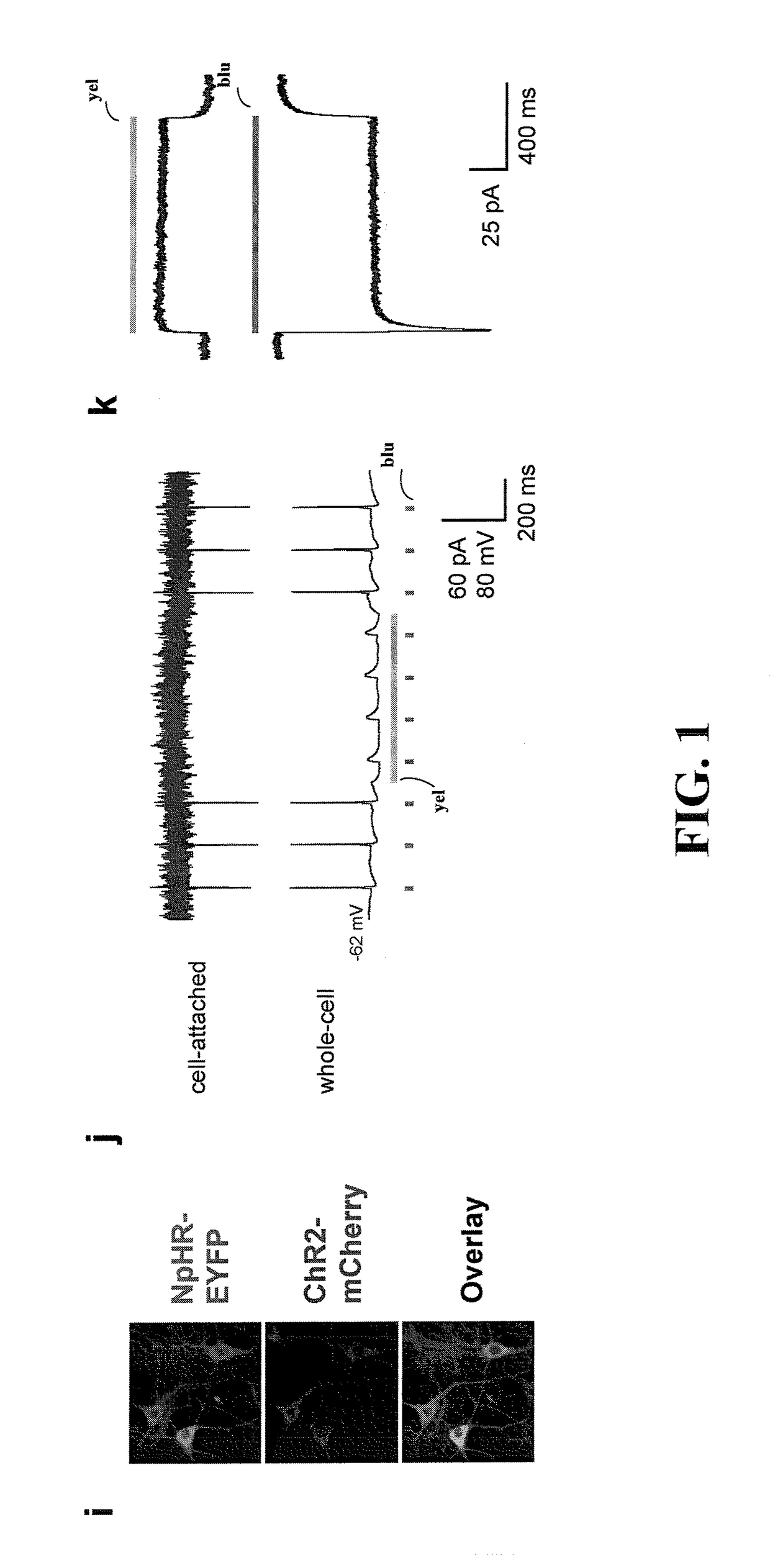Optogenetic method for generating an inhibitory current in a mammalian neuron
a mammalian neuron and inhibitory current technology, applied in the direction of enzymology, peptides, drug compositions, etc., can solve the problems of difficult neuromodulation, brain architecture, and the distribution of neurons responsible for a given mental process, so as to dissuade depolarization of the neuron
- Summary
- Abstract
- Description
- Claims
- Application Information
AI Technical Summary
Benefits of technology
Problems solved by technology
Method used
Image
Examples
Embodiment Construction
[0042]The present invention is believed to be useful for facilitating practical application of a variety of photosensitive bio-molecular structures, and the invention has been found to be particularly suited for use in arrangements and methods dealing with cellular membrane voltage control and stimulation. While the present invention is not necessarily limited to such applications, various aspects of the invention may be appreciated through a discussion of various examples using this context.
[0043]Consistent with one example embodiment of the present invention, a light-responsive protein / molecule is engineered in a cell. The protein affects a flow of ions across the cell membrane in response to light. This change in ion flow creates a corresponding change in the electrical properties of the cells including, for example, the voltage and current flow across the cell membrane. In one instance, the protein functions in vivo using an endogenous cofactor to modify ion flow across the cell...
PUM
| Property | Measurement | Unit |
|---|---|---|
| Wavelength | aaaaa | aaaaa |
| Volume | aaaaa | aaaaa |
| Fraction | aaaaa | aaaaa |
Abstract
Description
Claims
Application Information
 Login to View More
Login to View More - R&D
- Intellectual Property
- Life Sciences
- Materials
- Tech Scout
- Unparalleled Data Quality
- Higher Quality Content
- 60% Fewer Hallucinations
Browse by: Latest US Patents, China's latest patents, Technical Efficacy Thesaurus, Application Domain, Technology Topic, Popular Technical Reports.
© 2025 PatSnap. All rights reserved.Legal|Privacy policy|Modern Slavery Act Transparency Statement|Sitemap|About US| Contact US: help@patsnap.com



